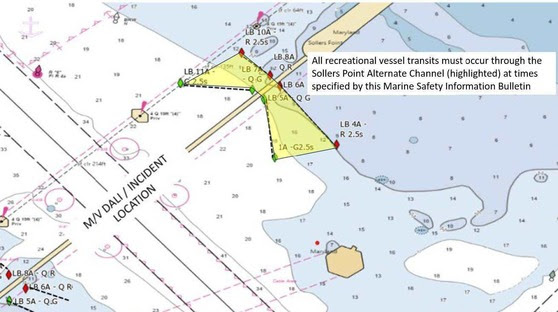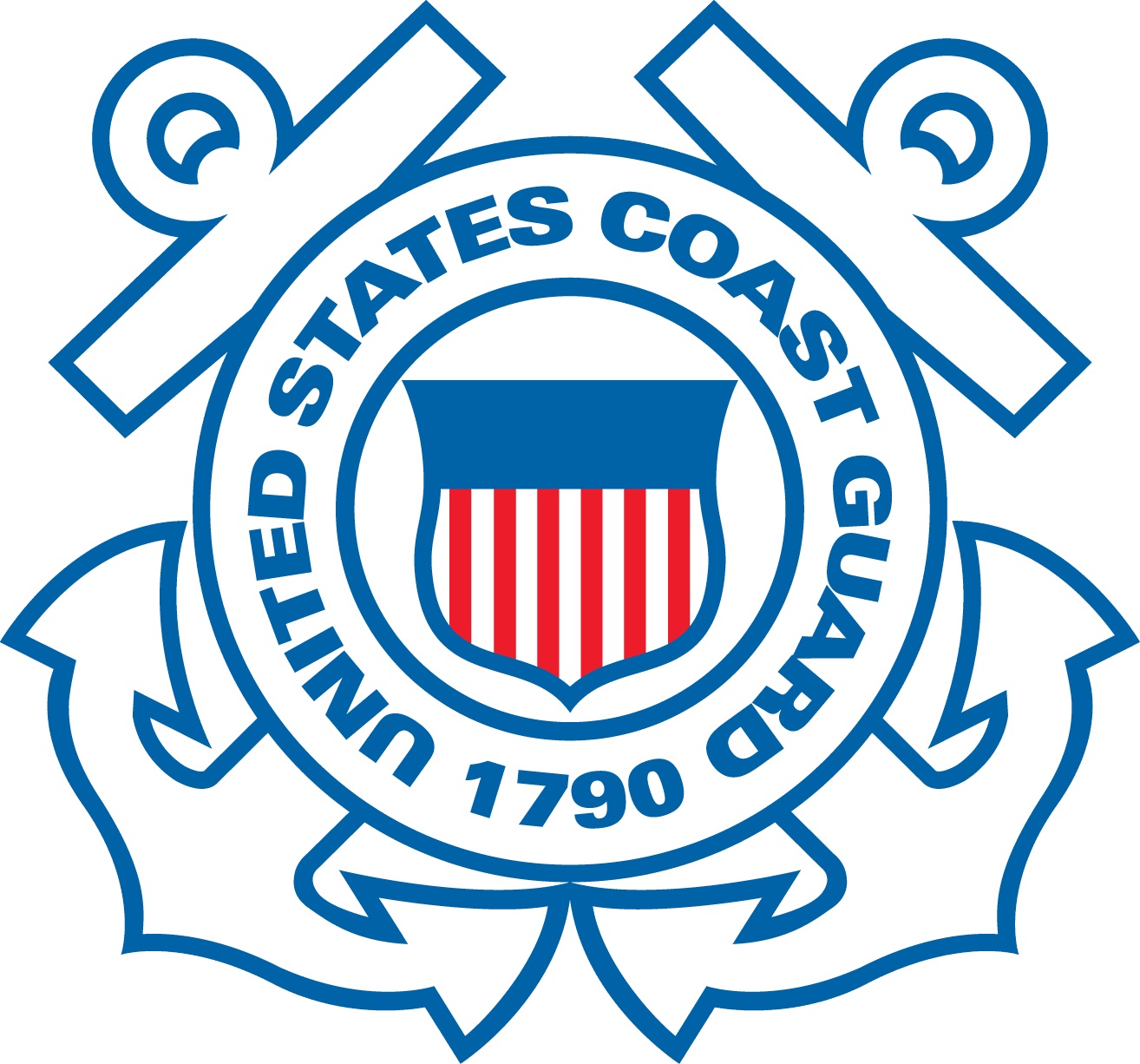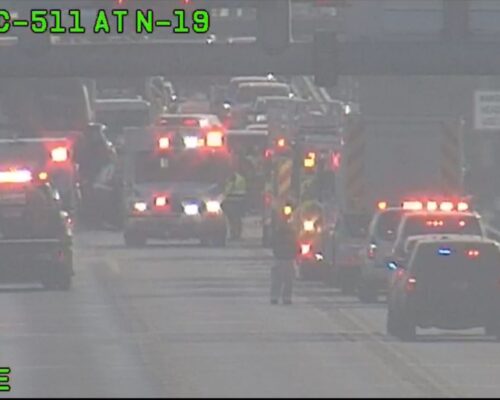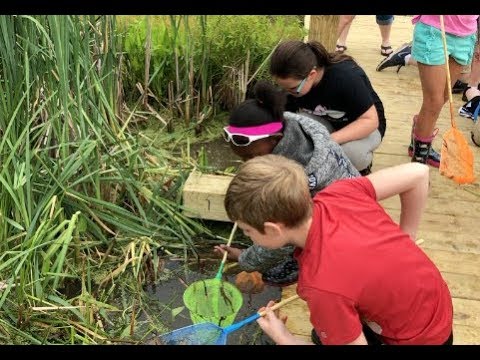As salvage crews work with some of the most powerful machines available to clear the Patapsco River of the Key Bridge disaster, the family of one more victim has received some closure.
Unified Command salvage teams located in the water what appeared to be one of the missing construction vehicles that was working on the bridge at the time of its collapse. Maryland State Police, the FBI and the Maryland Transportation Authority Police found and identified the remains of one of the victims, trapped inside the vehicle. The construction worker’s family has asked that his name not be released at this time.
Maryland Governor Wes Moore confirms that the FBI is conducting an “independent law enforcement case” right now and boarded the container ship M/V Dali. The state is cooperating with the investigation, but isn’t weighing in on what the FBI may be looking for in this independent investigation.
At the same time, crews are using heavy machinery to remove some of the biggest bridge sections yet. The bridge that collapsed was massive. Moore compares it to “the size of the Eiffel Tower and the weight of the Washington Monument.”
The crews are clearing massive amounts of debris with the aim of opening a larger, 35-foot-deep channel by the end of April and the full Port of Baltimore deep-water channel by the end of May.
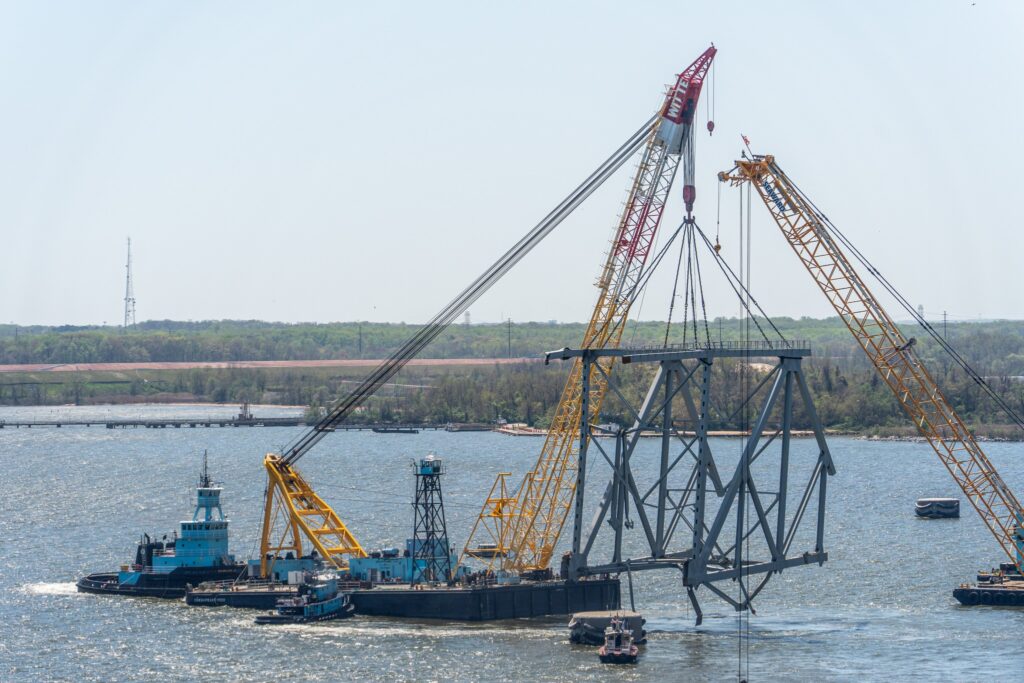
On Sunday, salvage crews used the crane barge Chesapeake 1000 to move one of the larger piece of supporting steel from the collapsed bridge, estimated to weigh more than 400 tons. The barge was back at work moving a second large, submerged section by Tuesday. According to the U.S. Army Corps of Engineers, the Chesapeake 1000 is the biggest floating crane on the Eastern seaboard. Removing these large pieces moves the Port of Baltimore closer to its goal of opening a Limited Access Channel to bring one-way ship traffic to the Port. U.S. Coast Guard Director of Governmental and Public Affairs Rear Admiral Will E. Watson said on Tuesday, April 16, that the efforts to reopen the full channel remain on schedule.
Simultaneously, salvage crews are painstakingly offloading containers by crane from the Dali to disentangle large sections of the bridge from the ship’s bow. The rubble and debris are being taken to Sparrows Point, former site of Bethlehem steel, for processing and recycling.
On Tuesday, for the first time since the Key Bridge collapsed on March 26, recreational boaters who were trapped inside the bridge site or blocked from entering the Baltimore harbor got one limited opportunity to enter or leave.
The recreational boating opportunity came after two separate channels had been opened for “commercially essential” vessel traffic, the first with a depth of 11 feet and the second allowing for a 14-foot depth. As of Thursday, Unified Command reported that 69 vessels had passed through the two channels.
The U.S. Coast Guard announced the plan for Tuesday, April 16, only, to “afford recreational vessels the opportunity for transit through the Key Bridge Response Safety Zone.” The Captain of the Port established the transit plan, which allowed boats to pass through the channel one way at a time. On Tuesday the 16th, outbound transits were allowed from 6:30 a.m. to 7:30 a.m. and inbound transits were permitted from 6 p.m. to 7 p.m.
There’s no word yet on whether the Captain of the Port will offer any additional windows of opportunity for recreational boaters.

